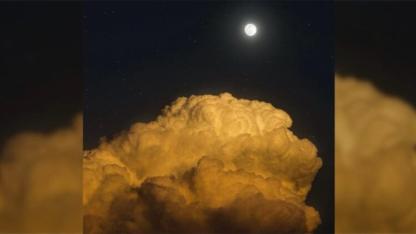Daylight saving time ends soon: Seattle prepares to “fall back”
The familiar fall ritual means brighter mornings but darker evenings, as sunset will begin arriving before many people leave work.
For Seattle, where autumn days already grow shorter due to its northern latitude, the transition will make a noticeable difference. The sun will rise earlier, but the evenings will become much shorter, often casting the city into twilight before 5 p.m. While some residents appreciate the extra morning light, others dislike the abrupt early darkness that follows.

This semiannual clock change continues to be a topic of debate across the country. Despite repeated efforts in Congress to make daylight saving time permanent, the practice remains, keeping Americans on the traditional cycle of “spring forward” in March and “fall back” in November.
What is daylight saving time?
Daylight saving time is the period between spring and fall when clocks are set one hour ahead of standard time to make better use of daylight during the longer, warmer months. The idea is to extend evening sunlight, allowing people to enjoy more daylight after work and potentially reduce electricity consumption.
In the United States, DST begins on the second Sunday in March and ends on the first Sunday in November, as set by federal law. The concept was first adopted during World War I in 1918 to conserve fuel and energy by reducing the need for artificial lighting in the evenings. After the war, the practice was briefly discontinued, only to be reinstated during World War II for similar reasons.
Over the decades, daylight saving time has evolved, with changes in start and end dates to better align with national energy use and daylight patterns. Today, it remains a defining seasonal transition for millions of Americans, even as debates continue over whether the system still serves its original purpose.
When does daylight saving time end in Seattle in 2025?
In Seattle, daylight saving time officially ends at 2 a.m. local time on Sunday, November 2, 2025. Residents should set their clocks back one hour, returning to standard time. For most people, this means an extra hour of rest overnight, though it also marks the beginning of shorter days and earlier sunsets across the Pacific Northwest.
The shift back to standard time means sunrise will occur earlier in the morning—beneficial for early commuters—but evening darkness will settle in much sooner. For Seattleites used to late sunsets in summer, the change will feel dramatic. By early November, sunset in Seattle will occur before 5 p.m., and by December, the shortest days of the year will bring sunset times near 4:20 p.m.
Which states don’t observe daylight saving time?
While most of the United States participates in daylight saving time, a few states and territories have opted out. Federal law allows states to remain on standard time year-round but not on daylight time permanently.
The regions that do not observe daylight saving time include:
- Hawaii
- Most of Arizona (except for the Navajo Nation)
- American Samoa
- Guam
- Northern Mariana Islands
- Puerto Rico
- U.S. Virgin Islands
These areas stay on standard time throughout the year, avoiding the biannual clock change that the rest of the country follows.
Is daylight saving time observed outside the U.S.?
Yes, many countries around the world also observe daylight saving time, though the dates and rules differ. Nearly all of Europe participates, with exceptions such as Russia, Belarus, Iceland, Armenia, Azerbaijan, Georgia, and Turkey, which have chosen to stay on standard time.
Other regions, including parts of Canada, Latin America, the Caribbean, and Australia, follow similar time adjustments. Interestingly, Egypt is the only country in Africa that currently observes daylight saving time. The global patchwork of observance makes international coordination and travel timing more complex during the transitional weeks each spring and fall.
When does daylight saving time start again in 2026?
Daylight saving time will return in Seattle and across most of the U.S. on Sunday, March 8, 2026, when clocks will “spring forward” one hour at 2 a.m. That shift will restore longer evening daylight hours as the nation transitions into spring and summer.
Until then, Seattle residents can enjoy a bit more sleep and brighter mornings through the winter months. The familiar rhythm of changing clocks may spark debate each year, but for now, the routine remains firmly in place—reminding everyone to check their clocks and savor that extra hour when daylight saving time ends on November 2, 2025.











Yorumlar
Kalan Karakter: